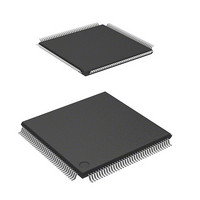DF2166VT33WV Renesas Electronics America, DF2166VT33WV Datasheet - Page 322

DF2166VT33WV
Manufacturer Part Number
DF2166VT33WV
Description
MCU 16BIT FLASH 3V 512K 144-TQFP
Manufacturer
Renesas Electronics America
Series
H8® H8S/2100r
Datasheet
1.HS2168EPI61H-U.pdf
(876 pages)
Specifications of DF2166VT33WV
Core Processor
H8S/2000
Core Size
16-Bit
Speed
33MHz
Connectivity
I²C, IrDA, LPC, SCI, SmartCard
Peripherals
POR, PWM, WDT
Number Of I /o
106
Program Memory Size
512KB (512K x 8)
Program Memory Type
FLASH
Ram Size
40K x 8
Voltage - Supply (vcc/vdd)
3 V ~ 3.6 V
Data Converters
A/D 8x10b; D/A 2x8b
Oscillator Type
External
Operating Temperature
-20°C ~ 75°C
Package / Case
144-TQFP, 144-VQFP
Lead Free Status / RoHS Status
Lead free / RoHS Compliant
Eeprom Size
-
Available stocks
Company
Part Number
Manufacturer
Quantity
Price
Company:
Part Number:
DF2166VT33WV
Manufacturer:
Renesas Electronics America
Quantity:
135
Company:
Part Number:
DF2166VT33WV
Manufacturer:
Renesas Electronics America
Quantity:
10 000
- Current page: 322 of 876
- Download datasheet (5Mb)
11.3.1
FRC is a 16-bit readable/writable up-counter. The clock source is selected by bits CKS1 and
CKS0 in TCR. FRC can be cleared by compare-match A. When FRC overflows from H'FFFF to
H'0000, the overflow flag bit (OVF) in TCSR is set to 1. FRC should always be accessed in 16-bit
units; cannot be accessed in 8-bit units. FRC is initialized to H'0000.
11.3.2
The FRT has two output compare registers, OCRA and OCRB, each of which is a 16-bit
readable/writable register whose contents are continually compared with the value in FRC. When
a match is detected (compare-match), the corresponding output compare flag (OCFA or OCFB) is
set to 1 in TCSR. If the OEA or OEB bit in TOCR is set to 1, when the OCR and FRC values
match, the output level selected by the OLVLA or OLVLB bit in TOCR is output at the output
compare output pin (FTOA or FTOB). Following a reset, the FTOA and FTOB output levels are 0
until the first compare-match. OCR should always be accessed in 16-bit units; cannot be accessed
in 8-bit units. OCR is initialized to H'FFFF.
11.3.3
The FRT has four input capture registers, ICRA to ICRD, each of which is a 16-bit read-only
register. When the rising or falling edge of the signal at an input capture input pin (FTIA to FTID)
is detected, the current FRC value is transferred to the corresponding input capture register (ICRA
to ICRD). At the same time, the corresponding input capture flag (ICFA to ICFD) in TCSR is set
to 1. The FRC contents are transferred to ICR regardless of the value of ICF. The input capture
edge is selected by the input edge select bits (IEDGA to IEDGD) in TCR.
ICRC and ICRD can be used as ICRA and ICRB buffer registers, respectively, by means of buffer
enable bits A and B (BUFEA and BUFEB) in TCR. For example, if an input capture occurs when
ICRC is specified as the ICRA buffer register, the FRC contents are transferred to ICRA, and then
transferred to the buffer register ICRC. When IEDGA and IEDGC bits in TCR are set to different
values, both rising and falling edges can be specified as the change of the external input signal.
To ensure input capture, the input capture pulse width should be at least 1.5 system clocks (φ) for
a single edge. When triggering is enabled on both edges, the input capture pulse width should be at
least 2.5 system clocks (φ).
ICRA to ICRD should always be accessed in 16-bit units; cannot be accessed in 8-bit units. ICR is
initialized to H'0000.
Rev. 3.00, 03/04, page 280 of 830
Free-Running Counter (FRC)
Output Compare Registers A and B (OCRA and OCRB)
Input Capture Registers A to D (ICRA to ICRD)
Related parts for DF2166VT33WV
Image
Part Number
Description
Manufacturer
Datasheet
Request
R

Part Number:
Description:
KIT STARTER FOR M16C/29
Manufacturer:
Renesas Electronics America
Datasheet:

Part Number:
Description:
KIT STARTER FOR R8C/2D
Manufacturer:
Renesas Electronics America
Datasheet:

Part Number:
Description:
R0K33062P STARTER KIT
Manufacturer:
Renesas Electronics America
Datasheet:

Part Number:
Description:
KIT STARTER FOR R8C/23 E8A
Manufacturer:
Renesas Electronics America
Datasheet:

Part Number:
Description:
KIT STARTER FOR R8C/25
Manufacturer:
Renesas Electronics America
Datasheet:

Part Number:
Description:
KIT STARTER H8S2456 SHARPE DSPLY
Manufacturer:
Renesas Electronics America
Datasheet:

Part Number:
Description:
KIT STARTER FOR R8C38C
Manufacturer:
Renesas Electronics America
Datasheet:

Part Number:
Description:
KIT STARTER FOR R8C35C
Manufacturer:
Renesas Electronics America
Datasheet:

Part Number:
Description:
KIT STARTER FOR R8CL3AC+LCD APPS
Manufacturer:
Renesas Electronics America
Datasheet:

Part Number:
Description:
KIT STARTER FOR RX610
Manufacturer:
Renesas Electronics America
Datasheet:

Part Number:
Description:
KIT STARTER FOR R32C/118
Manufacturer:
Renesas Electronics America
Datasheet:

Part Number:
Description:
KIT DEV RSK-R8C/26-29
Manufacturer:
Renesas Electronics America
Datasheet:

Part Number:
Description:
KIT STARTER FOR SH7124
Manufacturer:
Renesas Electronics America
Datasheet:

Part Number:
Description:
KIT STARTER FOR H8SX/1622
Manufacturer:
Renesas Electronics America
Datasheet:

Part Number:
Description:
KIT DEV FOR SH7203
Manufacturer:
Renesas Electronics America
Datasheet:











